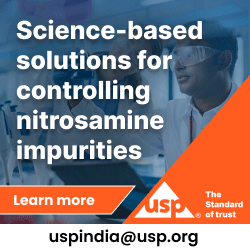Overview of batch chemistry and continuous flow chemistry services for the production and pharmaceutical development of intermediates and APIs.
Q1. What is Flow Chemistry?
“Flow chemistry”, also called “plug flow” or “continuous flow chemistry”, is the process of performing chemical reactions in a tube or pipe. In flow chemistry, a chemical reaction runs in a continuous flow stream rather than in batch production. Flow chemistry is a relatively young technology and has received a remarkable amount of attention in the past decade.
Flow chemistry systems involve the use of channels or tubes to conduct a reaction in a continuous stream. When these tubes are joined, the fluids mix with one another. These fluids react to one another and chemical reactions take place. This continuous flow process offers potential for the efficient manufacture of chemical products.- There are various hazardous reactions, such as hydrogenation reactions, oxidations, halogenations, nitrations and diazotization reactions that use toxic gases are often considered acceptable in continuous flow reactions.
Significant opportunity exists for flow chemistry, including segmented flow chemistry and plug flow chemistry, in fine chemicals and pharmaceuticals research and manufacturing. The most common types of flow reactors are plug flow reactors and column reactors, which are used to perform plug flow chemistry and segmented flow chemistry. To perform specific chemistry, more sophisticated reactors might be needed, such as photoreactors, electrochemical reactors, etc. Continuous flow chemistry technology could revolutionize affordability, reducing cost by as much as 40% and the lead time for prescription drugs by 90%.
In continuous flow chemistry systems, a reactor is a mixing device which is maintained at a precise temperature to get a desired reaction. Continuous flow chemistry begins with two or more streams of different reactants, reagents and solvents into a reaction loop pumped at specific flow rates and into a mixing device, which may be a simple pipe such as single chamber tube or a complex micro-structured device such as a microreactor.
This mixture streams feed into a mixing junction where reagent streams are combined. A reaction takes place and the stream containing the resultant compound is collected at the outlet.
Depending on the requirement, the reactants may also be exposed to photon flux or electrical flux to promote a photochemical or electrochemical reaction. Additionally, in situ FTIR spectroscopy can provide real-time feedback to proactively improve the reaction. In the continuous flow chemistry, only small amounts of material (reactants or reagents) are needed, which ultimately enhances process safety. The result is a product with higher quality, less impurity and faster reaction cycle time.
Q2. What are the benefits of flow chemistry?
The concept of "flow chemistry" defines a very general range of chemical reactions whereby reactants and solutions of reagents are combined by pumping fluids through tubes. Continuous flow chemistry has grown substantially, especially in pharmaceuticals, fine chemicals, catalytic reactions, green chemistry and polymer chemistry.
Flow chemistry has been used for decades in organic synthetic chemistry in the pharmaceutical and fine chemicals industries. This provides some major advantages, such as faster reactions, cleaner products, safer reactions and easy scale up. The inherent increased safety, improved product quality, cost efficiency and overall production flexibility are drivers for the growing use of continuous flow chemistry. There are well-defined advantages of using continuous flow chemistry or flow technologies as compared to standard batch chemistry methods which are noted below:
- Flow reactors are easily pressurized (upto 300psi), which also allows reactions to be heated at 100-150ºC above their normal boiling point than possible in batch reactions, where solvent reflux at ambient pressures is typical. Therefore, it creates reaction rates that are 1,000 times faster and can provide higher product yields.
- There are some hazardous compounds that are more safely handled by flow chemistry.Flow chemistry allows only a small amount of hazardous compound or intermediate to be formed at any instant.
- Flow chemistry systems with automation enables the quick variation of chemical reaction conditions on a very small scale, e.g. 100 µL. Inline, real-time analysis provides immediate feedback on the effect of variables on reaction performance.
- Hazardous reactions containing hazardous compounds and intermediates, which are considered too critical to carry out in batches, are often considered acceptable in continuous flow reactions.
- Precise control results in excellent reproducibility and safety, making flow chemistry technology applicable for production-scale.
- Exposure to toxic substrates and reagents are minimized by the smaller volumes required in continuous flow systems and the elimination of manual sampling for analysis.
- Continuous flow chemistry technology can be used to easily scale up to produce kilogram quantities.
- Flow reactors enable excellent reaction selectivity. Key reaction parameters such as mixing, heating, and residence time are more precisely controlled in the continuous flow systems, leading to better impurity control and product yield.
Flow chemistry has had a profound impact on science and engineering, creating new fields of research and opportunities for organic synthetic chemistry and commercial technology. The distinguishing feature of the flow chemistry has a high degree of precision in the delivery of reactants or reagents and excellent control over the conditions to which the solutions are exposed.
Q3. How does flow chemistry differ from conventional batch chemistry?
Flow chemistry is an established alternative to traditional batch chemistry with a number of advantages such as improved safety issues during scale up. Continuous flow chemistry techniques may be a better choice for your chemistry and is well worth investigating if you’re interested in producing consistent, fast, and safer chemistry.
Flow chemistry has progressed considerably in recent years, from basic laboratory techniques in organic synthetic chemistry to complex, multi-step reactions in practice. It can also aid chemists when using gaseous or hazardous compounds in synthetic procedures.
There is a huge difference between flow chemistry and conventional batch chemistry, which are noted below:
Flow of reagents - In the batch reactors, all reagents or reactants are loaded into a vessel at the start. Whereas, in flow chemistry, reagents or reactants are pumped under pressure and flow continuously through the reactor.
Flow reaction time - Reaction time is determined by the time the reagents or reactants take to flow through the reactor. In batch mode synthesis, the reaction time is determined by the time a vessel is stirred under fixed conditions. Flow reaction time can be reduced very easily by pressurizing the flow stream with a pressurization module.
Mixing and mass transfer - Mixing in a flow process is highly advantageous when compared to batch mode. Reactors designed for flow chemistry have high rates of mass transfer due to the small sizes and good mixing. A high degree of mixing translates into better reaction profiles.
Fast reactions - Reactions performed in round-bottomed flasks are difficult and time-consuming to optimize. Continuous flow systems produce faster, safer multi-step reactions with higher yields at a faster rate than is possible in batch.
Easy scale up - Flow reactions can simply be run for longer, which produces more materials or product yield.
Stoichiometry control - Under batch conditions, the stoichiometry is set by the molar ratio of the reagents used. On the other hand, in a flow process the ratio of parameters, such as flow rate and molarity, is used to set the specific stoichiometry. Reaction stoichiometry is controlled by the relative flow rates of the reactants. Some batch reactions cannot be run in flow (e.g. multi-step reactions forming solid products).
Precise control - Flow offers the chemist precise control of the critical reaction parameters, including stoichiometry, temperature, mixing and reaction time or residence time.
Heat transfer - The control of temperature in flow processes can be achieved very accurately, hence it achieves excellent heat transfer when compared with batch reactors due to the high surface area-to-volume ratio.
Flow chemistry is making chemicals research and manufacturing both greener and safer.
Certain classes of compounds, once deemed far too hazardous reactions for use in synthesis of pharmaceutical products, are also now within reach, thanks to flow chemistry.
Q4. Which are the leading pharmaceutical companies offering flow chemistry services?
Flow chemistry is partially responsible for the recent rapid pharmaceutical development and incorporation of photochemistry in synthesis, while access to reactive intermediates. Continuous flow chemistry, including segmented flow chemistry and plug flow chemistry, is being laid now for industries of the future, such as continuous-flow biologics and biopharmaceuticals.
There are various pharmaceutical organizations, such as contract pharmaceutical development and manufacturing organizations and contract manufacturing organizations involved in the synthesis of pharmaceutical products, which have the capabilities to carry out hazardous reactions (hydrogenation reactions), multi-step reactions, flow chemistry, including segmented flow chemistry, plug flow chemistry services, etc.
Some of the top pharmaceutical companies offering continuous flow chemistry contract services are:
Minakem - Minakem is a leader in certain technologies, such as flow reactions, hydrogenation reactions, route scouting, multi-step reactions, hazardous chemistry (hazardous reactions), low-temperature chemistry, scale up, etc. It offers innovative pharmaceutical development and manufacturing solutions for APIs, intermediates and HPAPIs, including cytotoxic molecules.
Medichem S.A. - Medichem has continuous flow reactors to offer flow chemistry services in its plant in Spain. It also provides scale up services, from research and development to industrial scale production.
Curia - Curia's continuous flow chemistry processing capabilities offer unique advantages compared to batch chemistry processes, resulting in faster and safer materials for synthesis of pharmaceutical products of higher selectivity.
Angelini Pharma - Angelini Pharma is a CDMO that has extensive experience in route scouting, continuous flow chemistry, segmented flow chemistry and batch chemistry, and offers custom synthesis and manufacturing services for APIs.
PharmaZell GmbH - PharmaZell offers various CDMO services, including flow chemistry, route scouting, high-throughput electrochemistry, micronization, etc. Its long experience of electrochemistry on a production scale allows it to run cleaner, higher yielding and more selective reactions.
All Suppliers












 Evonik's CDMO solutions for APIs and HPAPIs: It specializes where the client needs it most!
Evonik's CDMO solutions for APIs and HPAPIs: It specializes where the client needs it most!

















